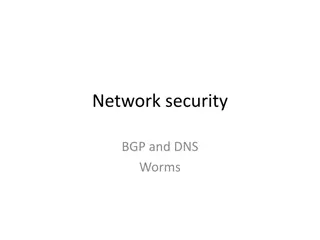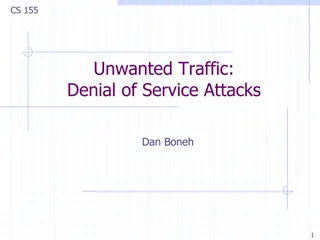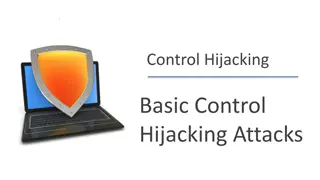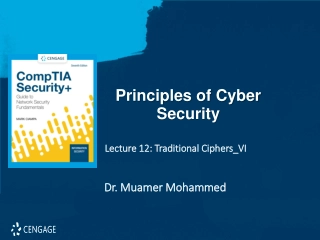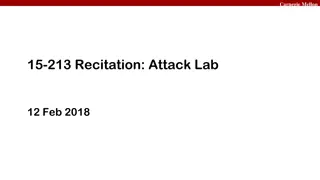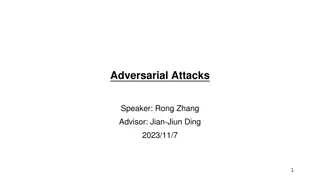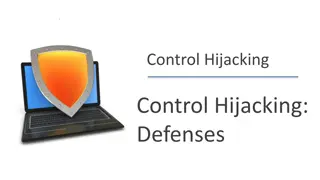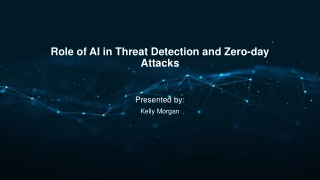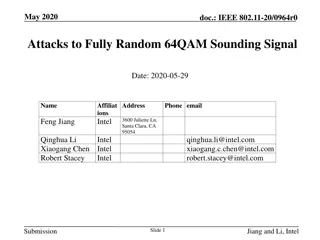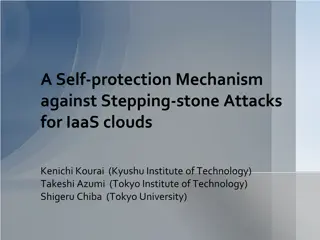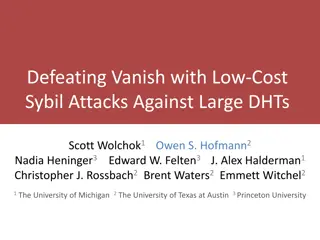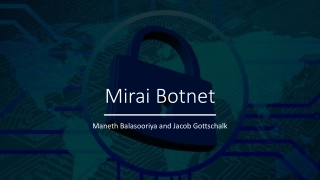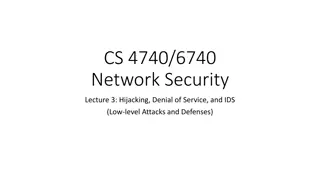Understanding Low-Intensity DoS Attacks on BGP Infrastructure
Low-intensity Denial of Service (DoS) attacks present a new challenge in cyber warfare, blending in with regular traffic to target communication channels like HTTP, SMTP, and DNS. These attacks require multiple participating hosts to flood the target with useless packets, gradually overloading server/router buffers and causing denial of service conditions. By implementing periodic splashes of rogue traffic close to session time-outs, attackers aim to keep sessions alive and disrupt services without requiring significant bandwidth or computing power. An analysis of TCP stack vulnerability and the AIMD algorithm sheds light on how attackers exploit congestion control mechanisms.
Download Presentation

Please find below an Image/Link to download the presentation.
The content on the website is provided AS IS for your information and personal use only. It may not be sold, licensed, or shared on other websites without obtaining consent from the author. Download presentation by click this link. If you encounter any issues during the download, it is possible that the publisher has removed the file from their server.
E N D
Presentation Transcript
Paul Neumann pneumann@umt.edu.al Low-intensity DoS attacks on BGP infrastructure One need not fear superior numbers if the opposing force has been properly scouted and appraised. George Armstrong Custer
DoS attacks Aim: Whole networks and/or systems, as well as individual hosts. Goals: To consume resources in order of shutting down or substantial deteriorating services to the legitimate users. Resources: Bandwidth, servers/routers computing time, protocol implementations. Stack overflow, DNS flood, ping flood, packet drop, etc.
DoS attack detection Anomalies in the traffic pattern: Events or conditions with significant statistical deviation from the usual pattern based on the data previously collected in standard conditions. Traditional means of defence (firewalls, IDS, etc.) are inefficient. SIEM: Any deviation over the threshold mean triggers incident alert. Inefficient for the low-intensity DoS attacks.
Low-intensity DoS attacks New trend in the cyber warfare: Low-intensity DoS attacks indistinguishable from regular traffic. Communication channels not overloaded but have significant droppage of the request/acknowledgement packets. Low-intensity DoS attacks may be adapted against HTTP, SMTP, and/or DNS traffic. Apache- and Microsoft IIS-based systems most vulnerable.
Low-intensity DoS attacks Require a number of participating or compromised hosts for rogue flooding of the target with useless packets. Rogue implementation of the DoS methods will fail if a massive amount of anomalous traffic is detected by the firewalls. Low-intensity DoS attack implement periodic increase (splashes) of the rogue traffic.
Low-intensity DoS attacks For better efficiency splashes are made close to the time-out of the open session to keep the session alive. Server/router buffers become gradually overloaded, leading to the denial of service condition. Low-intensity DoS attacks do not require significantly big bandwidth or computing power.
TCP stack vulnerability Additive-Increase/Multiplicative-Decrease (AIMD) algorithm combines linear growth of the congestion window with an exponential reduction when a congestion takes place. When congestion is detected, transmitter decreases transmission rate by a multiplicative factor. Multiplicative decrease is triggered when a timeout or acknowledgement message indicates a packet was lost. It is possible to enforce zero-bandwidth through injecting DoS traffic into the regular traffic.
Network bandwidth DoS DoS consists of short peaks of rogue impulses with carefully synchronized period. If combined traffic during the peaks is big enough to cause packet droppage, transmission will fail. Retransmission will be attempted after Retransmission Time-Out (RTO). If the DoS period coincides with RTO, regular traffic will constantly encounter time-out. Packet losses will close to 100%, and bandwidth to 0.
Experimental topology Virtual machines based on VirtualBox platform. Emulated Intel Core i5-5200 CPU @ 2.20 GHZ. Operating system: Ubuntu Linux 14.04. HTTP servers: Apache2 and nginx. DNS servers: bind9. ICMP and BGP routers: Zebra and Quagga. Network topology: PacketTracer. Attacking OS: Kali Linux.
Network topology Branched topology: emulate real-world systems. Dynamic routing: availability of nodes and services.
Model of DoS attack At t==0 rogue user sends the first impulse, shuts down the system. Legitimate user encounters time-out, forced to wait for retransmission, and double the RTO. Rogue user repeats attack at t==1+2RTT (Round-Trip Time). Iegitimate user encounters time-out, forced to wait for retransmission double the time, and double the RTO. Rogue user will shut down the service by sending packets at low rate every odd point in time.
HTTP attack PC10 target; PC12, PC13 sources of attack. Main monitor client. Method of attack: SlowLoris.
HTTP attack Attack made with the slowhttptest DoS simulator: where: -H SlowLoris mode; -u attacked URL; -p time-out; -c number of connections; -k number of attempts. Monitoring was made with siege stress tester: where: -c concurrent number of simulated users; -t selected period of test time.
Losses vs. availability Successful DoS attack w/o serious investment in the bandwith of attacking hosts.
DoS attack on BGP system Attack was driven against the network segment on Router3 and Router4.
DoS attack on BGP system Network throughput measured with iperf utility. Attack: Scenario 1:Direct attack on Quagga. Scenario 2:Attack on BGP infrastructure behind Router4 to compromise routing channel.
Attack on Quagga SYN-ACK packets sent with 5 sec. time-out. Using scapy Python scripting utility:
Attack on Quagga Handshake initialized and processed except the ESTABLISHED status. Quagga responds with RST packet to the rogue requests. Changing time.sleep()parameter in the 1 to 300 range resulted in closing connection with SYN-RECV status. No problems with availability:
Analysis Successful low-intensity DoS attack requires BGP emulating software. Legitimate connection to rogue requests possible only on misconfigured servers. Data exchange between BGP neighbours based on Access Lists (ACL): - permission to transmit routes to a neighbour, - permission to receive routes from a neighbour.
Router-in-the-Middle attack Attack driven at the server behind attacked router. Goal: To force the router to lower the bandwidth due to processing rogue traffic generated from low-intensity DoS attack. Attacked was PC13 behind Router4: Network throughput measured with iperf utility.
Analysis No changes in the throughput: Slight droppage of the speed results from interface set-up to match real-world conditions. Traffic generated from low-intensity DoS attack doesn t affect the border router s bandwidth. Network throughput measured with iperf utility.
Analysis Attacks on systems with default configuration were successful. As a rule default configurations ignore parameters to counter-act attacks. Quagga is a remarkable exception. Low-intensity DoS attacks deteriorate channel bandwidth. It results in denial of HTTP services to legitimate users.
Comparison Normal traffic. Traffic under attack.
Conclusions Aleksandar Kuzmanovic, Edward W. Knightly. Low-rate TCP- targeted denial of service attacks and counter strategies. IEEE/ACM Trans. Netw. 2006. No 14 (4). . 683-696. discusses how low-intensity DoS attacks on routing protocols may cause avalanche effect and destroy substantial segments of the Internet. Experiment proves that such an attack may succeed only in the presence of many factors, including routers misconfiguration, substantial amount of computing resources, and well-coordinated scenario of the attack.
Questions? Thank you for your attention! Thank you for your attention!


